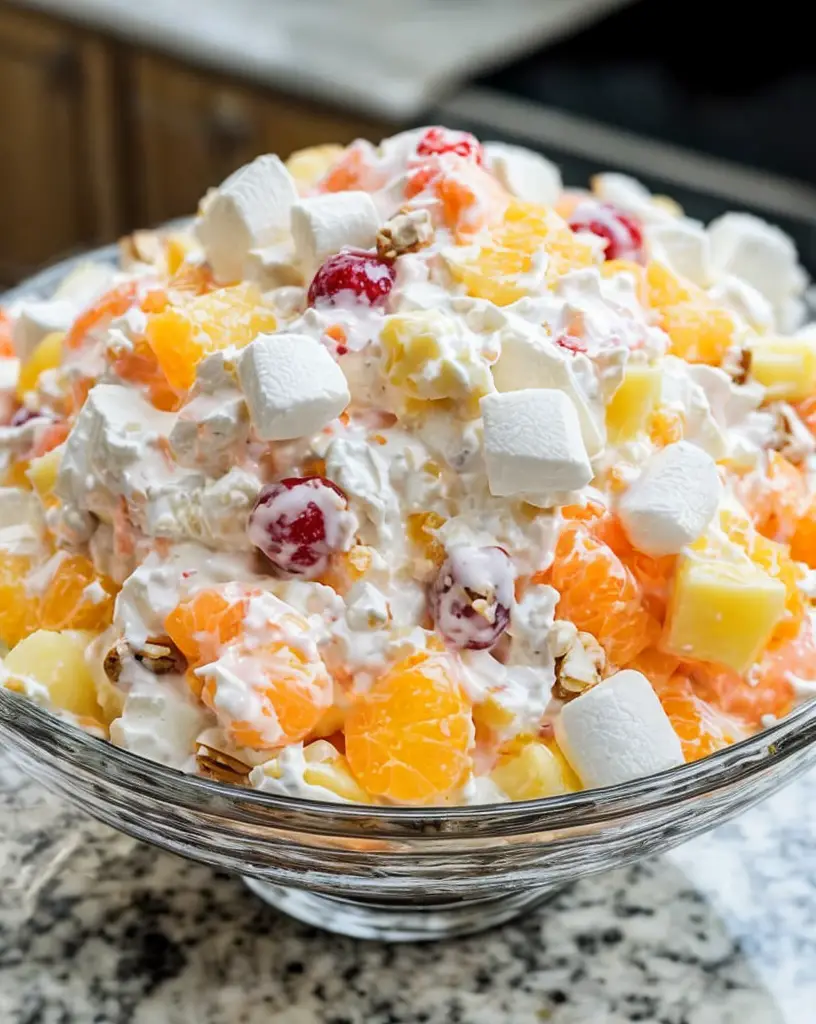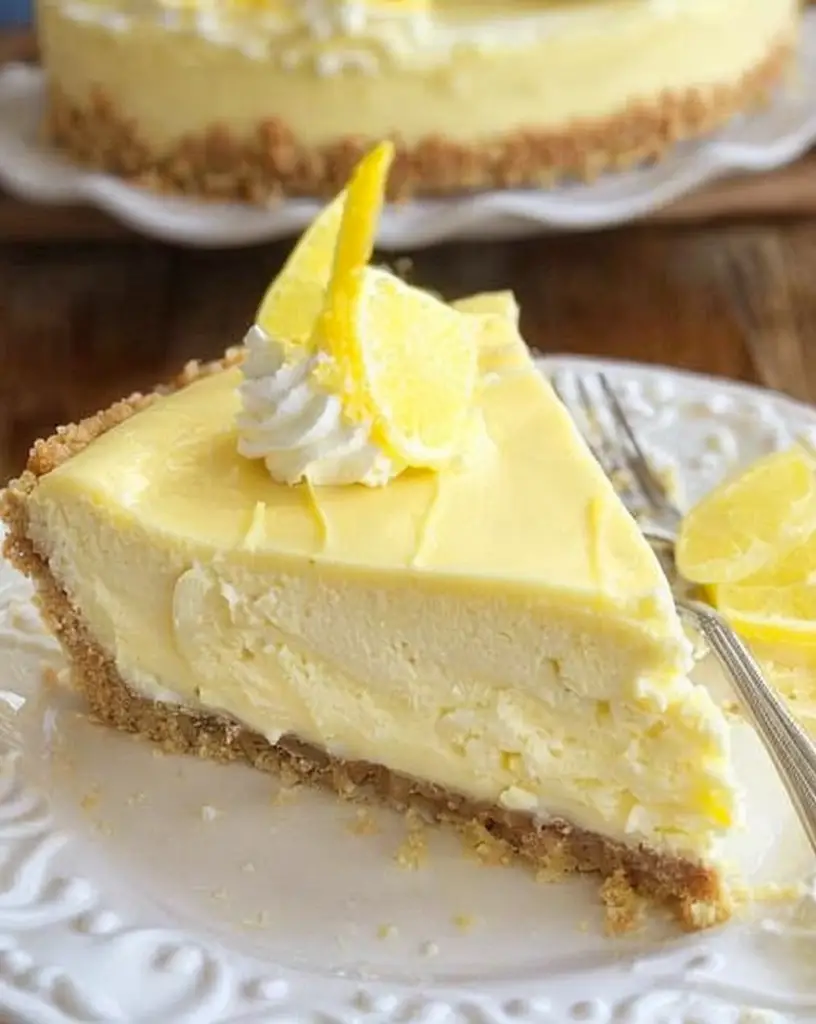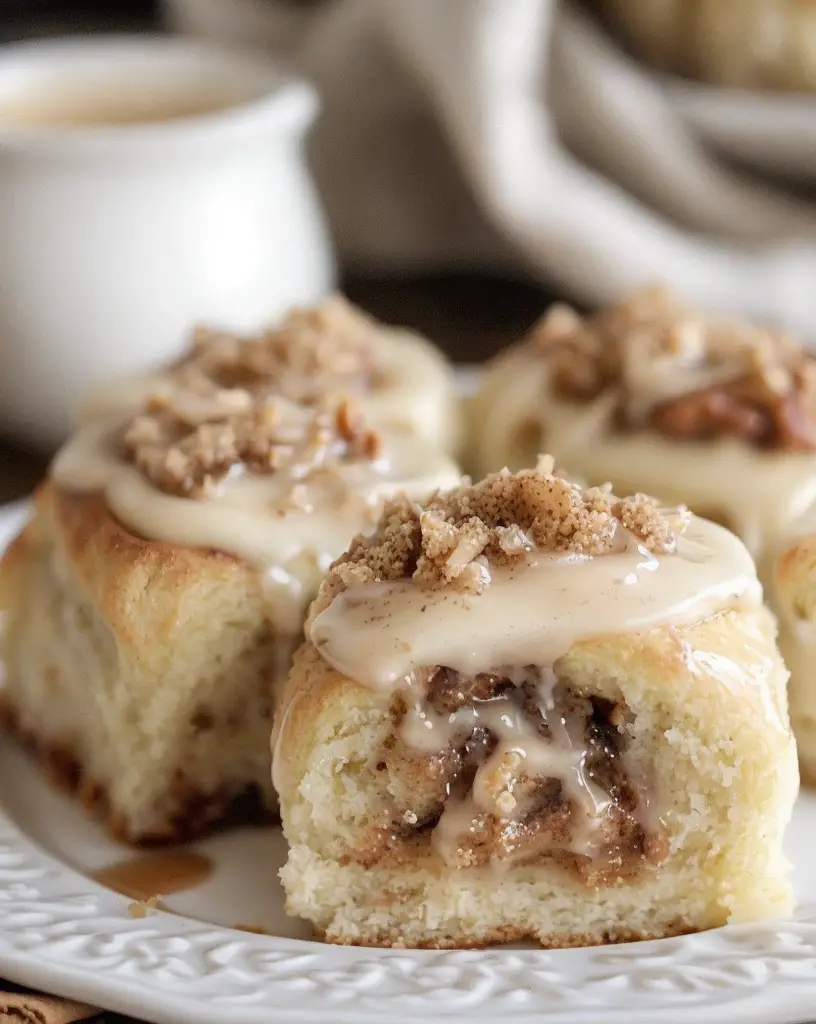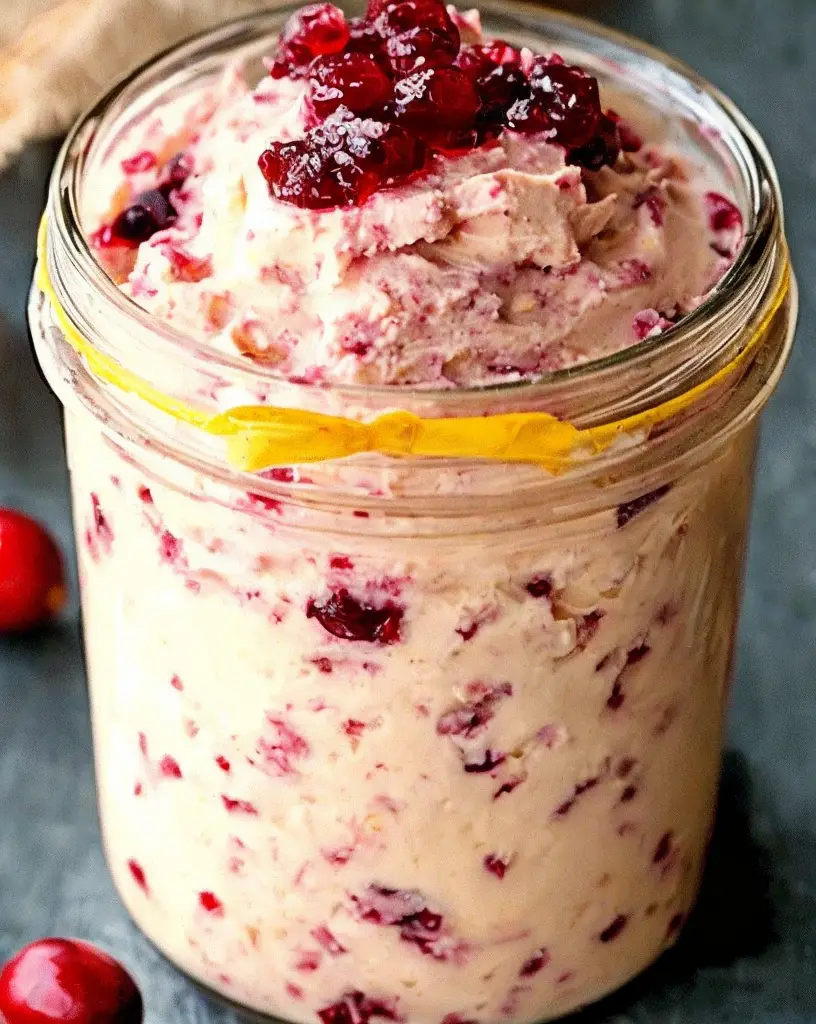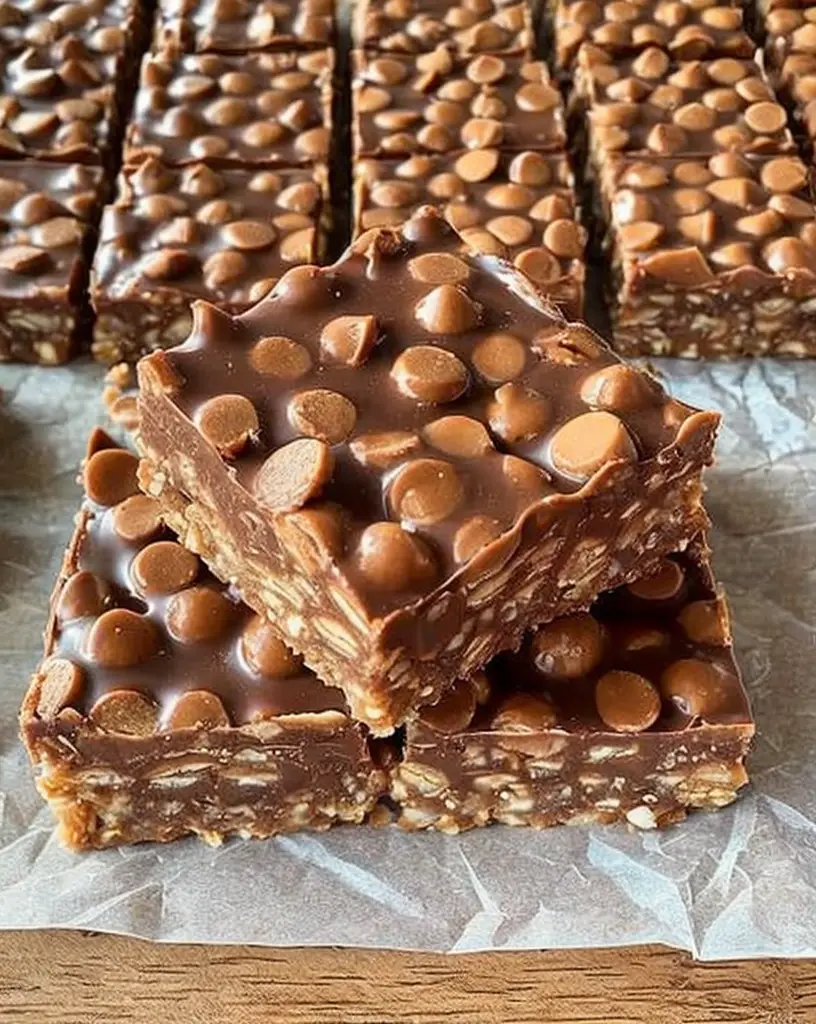Red Velvet White Chocolate Cheesecake: A Decadent Dessert Experience
Step into a world of velvety flavors with this irresistible Red Velvet White Chocolate Cheesecake. Perfectly blending the charm of a red velvet cake with the creamy excellence of cheesecake, this dessert is a treat for the senses. Featuring a crunchy chocolate crust, a delicate white chocolate flavor, and the signature red hue, it’s bound to capture hearts at any gathering.
Merging sophistication and nostalgia, each bite of this cheesecake delivers a unique sensory experience. The smooth cream cheese layer, enhanced by the sweetness of white chocolate, offers a delightful contrast to the slight tang of red velvet. Dive into this culinary journey that celebrates flavors and textures in perfect harmony.
Bake this cheesecake for romantic dinners, holiday gatherings, or when you simply wish to indulge in an exquisite dessert. The Red Velvet White Chocolate Cheesecake is more than just a sweet treat; it’s a centerpiece that sparks conversations and leaves lasting memories.
Quick Recipe Highlights
- Flavor Profile: A harmonious blend of tangy cream cheese and sweet white chocolate, wrapped in red velvet allure.
- Texture: A smooth, rich cream cheese filling atop a crunchy chocolate crust, with a subtly velvety touch.
- Aroma: Delight your senses with the sweet and slightly tangy fragrance of cheesecake mingled with notes of white chocolate.
- Visual Appeal: A stunning red center with creamy white layers, promising sophisticated elegance on any dessert table.
- Skill Level Needed: Intermediate baking skills with attention to detail in baking and layering.
- Special Equipment: A springform pan and a double boiler are essential for perfect results.
Recipe Overview
- Difficulty Level: This recipe requires moderate expertise, involving careful attention to detail in mixing and baking to achieve the ideal texture and flavor balance.
- Category: Best categorized as a dessert, this cheesecake is also a great choice for special celebrations and events.
- Cuisine: A fusion of American classic flavors with modern culinary artistry, creating a unique dessert experience.
- Cost: Relatively moderate, considering the quality ingredients that deliver rich textures and flavors.
- Season: Perfect for fall and winter, when the cozy flavors of red velvet are most appreciated.
- Occasion: Ideal for holiday dinners, romantic occasions, or as a luxurious treat to share with friends and family.
Why You’ll Love This Recipe
This cheesecake will instantly captivate your taste buds with its balance of sweet white chocolate and the tangy cream cheese signature to red velvet. The robust flavors, enhanced by the velvety texture, make every bite a delight. Preparation is made easy with straightforward steps, ensuring consistent results for every baker.
Nutritionally, this cheesecake is a treat made with real, wholesome ingredients like fresh cream cheese and fine chocolate. Enjoy this dessert as an occasional indulgence, loved by all ages for its nostalgic and modern flavors.
Social gatherings become unforgettable with the presence of this cheesecake. Perfectly designed for entertaining, it not only tastes divine but also looks stunning, making it a great conversation starter.
Budget-friendly and accessible, the recipe uses common pantry foods enhanced by a few select ingredients to elevate its flavor profile. With easily sourced materials, this dessert is within reach to create at home.
Historical Background and Cultural Significance
The red velvet cake, known for its rich color and soft texture, hails from early 20th-century American cuisine. Historically revered for both its inviting color and moist cake layers, it epitomizes a bygone era of classic desserts. Its transformation into cheesecake allowed modern chefs to fuse nostalgia with innovation.
In various regions, the red velvet has been adapted to reflect local tastes, often incorporating native ingredients for unique spins without losing the cake’s pure essence. The red velvet cheesecake discovered immense popularity in upscale restaurants before becoming a renowned staple at home gatherings.
Each layer of the Red Velvet White Chocolate Cheesecake holds cultural tales of the past, merging old-world techniques with new-age culinary artistry. Celebrated for its luxurious feel and memorable taste, this dessert symbolically bridges culinary traditions with contemporary dessert innovations.
Ingredient Deep Dive
Cream cheese is the star, adding richness and distinctive tang that holds cultural significance beyond just taste. It has grown from a staple in U.S. kitchens to an element celebrated globally for its versatility in desserts. Look for brands with minimum additives to keep its natural tang and creaminess.
White chocolate adds a luscious sweetness, balancing the tang of cream cheese in the cheesecake. Opt for high-quality varieties to ensure smooth melting and a clean, creamy taste. Also known for its historical transition from a simple confection to a gourmet ingredient, it represents luxury in this dessert context.
Flavoured subtly with vanilla extract, this ingredient’s warm aroma complements the dessert perfectly, weaving charming notes through each bite. Fresh vanilla beans or pure extract deliver the best and most natural flavors.
Common Mistakes to Avoid
- Overmixing the batter can lead to an undesirably dense texture. Mix just until incorporated.
- Using low-fat cream cheese can alter the cheesecake texture, so always use full-fat varieties for optimal creaminess.
- Skipping the water bath: Ensuring even cooking and preventing cracks in the cheesecake require a water bath method.
- Not cooling adequately before refrigerating may cause the cheesecake to collapse or become runny.
- Opening the oven door too early can cause temperature fluctuations, leading to cracks or uneven rise.
- Incorrectly measuring the ingredients, especially dry ones, may disturb the balance of flavors and texture.
- Preserving the cake with inadequate refrigeration makes it prone to spoilage, losing its flavor textural integrity.
- Forgetting to use a springform pan can make cake removal difficult, potentially ruining its presentation.
- The improper wrapping during storage may result in flavor absorption from other foods, tarnishing its taste.
- Overbaking can dry out the cheesecake, losing its creamy, luscious texture.
Essential Techniques
Creating a water bath is crucial for an evenly baked and smooth cheesecake. This technique helps regulate the temperature within the oven, preventing surface cracks and ensuring uniform cooking.
Mastering the cream cheese blending process is essential for a perfect batter. Ensure the cheese is at room temperature for easy mixing, avoiding lumps.
Proper chocolate melting is key. Through gentle heat with a double boiler, the white chocolate reaches a smooth, liquid state without scorching, providing a consistent flavor through the cheesecake.
Pro Tips for Perfect Red Velvet White Chocolate Cheesecake
Allow all ingredients to reach room temperature for a smoother blending experience. This prevents lumps and aids in achieving a uniform batter.
Use parchment paper lining for easy removal of the cheesecake from the pan, preserving its aesthetic appeal.
Chill the cheesecake overnight to ensure it sets fully. This resting period enhances the texture and deepens the flavor.
Reserve some white chocolate to garnish the top of the cheesecake, creating an eye-catching and enticing presentation.
Always preheat your oven to avoid initial temperature discrepancies that can lead to uneven baking.
Consider using an electric mixer with a paddle attachment to mix cream cheese, ensuring a perfectly smooth texture without lumps.
For a flavorful-driven twist, incorporate a teaspoon of espresso powder in the crust mixture for a subtle undertone and complexity.
Variations and Adaptations
For a regional twist, consider brewing some strong Indian Chai spices into the mix, offering a delightful aromatic difference without straying too much from the cheesecake’s traditional roots.
Seasonal fruit adaptations can include adding fresh raspberries or strawberries on top of the set cheesecake for a bright, tart contrast complementing the cake’s sweetness.
To cater to dietary preferences, explore options like a gluten-free crust with almond flour, reducing carbs while maintaining taste and texture.
Enhance the flavor spectrum by incorporating citrus zest, like organic orange or lemon, for a zesty fresh finish not commonly found in traditional recipes.
Switching the texture, you can layer the red velvet body with extra cream cheese batter for a marbled effect, adding visual intrigue.
For presentation options, drape melted white chocolate or vibrant berry coulis over the top with some edible glitter dust for a glamorous, eye-catching celebration centerpiece.
Serving and Presentation Guide
Elevate the visual appeal of this cheesecake by serving it on a timeless vintage dessert plate. Pair with antique cutlery for a quaint, nostalgic feel.
Consider garnishing with a raspberry coulis drizzle, or a simple dusting of powdered sugar for an understated elegance.
Pair portions with a small serving of softly whipped cream and fresh mint leaves at the side, bringing out natural colors within the cake’s vibrant palette.
For a contemporary approach, slice the cheesecake into neat mini servings, topped with a dollop of sweetened cream cheese frosting piped artfully atop each piece.
Always serve chilled for best textual enjoyment, allowing the natural tang from the red velvet and creamy layers to shine.
Include portion control tips: given the richness of this dessert, small servings are recommended to allow for appreciation of its depth.
Wine and Beverage Pairing
Complement your Red Velvet White Chocolate Cheesecake with a chilling glass of Moscato, its sweet notes elevating the creamy richness without overpowering the cheesecake’s own sweetness.
If you prefer non-alcoholic options, opt for a virgin berry spritzer, offering a light, refreshing tang with undertones that harmonize with the dessert’s red velvet profile.
Coffee pairings can shine with this cheesecake; the robust notes of a freshly brewed medium roast bean or a creamy latte counterbalance the cake’s sweetness.
Consider temperature in your drinks; each should be imbibed cool to match the chilled nature of the cheesecake, ensuring a consistent experience from dessert to beverage.
Present drinks in elegant glassware, allowing the hues of the mixture to enhance and enrich the dining table’s visual aesthetics.
Storage and Shelf Life
Place cooled cheesecake in an airtight container or tightly wrapped in plastic wrap within the refrigerator to last notably up to five days, retaining its quality.
Store in the lower cheese drawer to afford consistent cool temperatures around the desserts, preserving the delicate balance of flavors.
Mind the integrity of the cake when transferring between containers; always choose a flat-bottomed, wide-lidded one to prevent damage to the cheesecake top.
Look out for discoloration on the surface or signs of staleness such as an off odor, which are indicators to discard.
Reheat slices only briefly if necessary, to bring back slight warmth in crust if desired, but do not attempt to warm further.
For extended storage, freeze in slices with parchment paper between each, stored well for up to one month.
Make Ahead Strategies
Ahead of a planned event, work with a 24-hour advance baking lead. This allows ample time for setting and ensures no rush affects the finishing touches.
Complete crust preparation up to two days in advance when stored covered in the fridge, saving time during assembly.
Maintain cheesecake quality in the refrigerator, covered, up to two days before removing it for dressing before serving, ensuring maximum freshness.
When reheating, opt for low, gentle temperatures to cause the least possible structure undermining, maintaining richness.
Add fresh fruit or garnishes on the serving day itself, preserving vibrant colors and maximum appeal.
Plan assembling progression, dividing day tasks and leaving room for adjustments or strategic modifications.
Scaling Instructions
To reduce servings, cut ingredient measurements in half, while adjusting preparation like springform pan size to prevent overcooking.
Doubling ingredients for larger servings, consider larger-sized pans or baking multiple cakes to avoid restricted rising in one pan.
Remember, timing needs adjustment: larger quantities require extending baking duration slightly due to increased mixture depth.
Maintain stored leftovers in refrigerator-ready containers or clear food-wrapped seals to ensure hygienic conditions.
Account for the changing ratio of crust-to-cheesecake in scaling, adjusting proportionate ingredient quantities and form.
Account for ambient conditions and monitor during the mixing of voluminous ingredient masses to prevent ingredient spillage.
Nutritional Deep Dive
The Red Velvet White Chocolate Cheesecake, rich yet occasional treat, can provide a satisfying indulgence with a controlled serving size.
An analysis of macronutrients shows a predominance of fats and carbohydrates, primarily sourced from cream cheese, chocolate, and sugar ingredients.
Through moderation, enjoy how its concentrated energy density satisfies sweet cravings in a layered flavor experience.
Pay attention to lactose and gluten adaptability when considering dietary needs, especially within its signature cake base and cream cheese composition.
For portions, maintain a conservative approach to avert any overindulgence impacts while retaining delightful taste appreciation.
Useful management insights involve off-setting rich slice servings with lighter accompaniments, creating a balanced culinary indulgence moment.
Dietary Adaptations
Modify to a gluten-free version using almond-based or other naturally gluten-free alternatives without impacting taste remarkably.
Explore dairy-free options through tofu or cashew substitutes for cream cheese, achieving smooth textures paired with subtle flavors.
Consider sweetening with naturally derived sugar alternatives like stevia, reducing the caloric impact while maintaining dessert enjoyment.
Low-carb adaptations can include a nut crust replacing the traditional wheat-based alternative, engaging keto-conscious dining.
Try Paleo modifications, selecting authentic non-processed ingredients that remain integral yet unique within cheesecake preparation.
Examine any particular low-FODMAP ingredients, applying replacements adept at maintaining bite enjoyment while addressing digestive ease.
Troubleshooting Guide
Should the cheesecake layer split, reassess mixing times and tool elements, striving towards moderated processes securing textures within.
Cracking surfaces suggest temperature issues or overbaking, necessary adjustments embracing slower paces securing silky textures.
Flavor imbalances can be addressed by revisiting original ingredient quantities ensuring a greater harmony of intended cheesecake think-tanks.
Avoid temperature extremes during handling; sudden heating or cooling increases risks in textural integrity breakdown.
Adapt setups utilizing standard kitchen equipment when specialist aspects surpass recipe-inherent accessibility.
Reconsider ingredient availability with a substitutive overview ensuring a range of equal textures and flavors, avoiding any cuts incomplete.
Balance effort distributions precisely, aligning timing allowances to align recipe transitions accurately, saving even interim states.
Recipe Success Stories
The cheesecake rediscovery story is simply legendary, with cream cheese elegance borne from daily-life adaptability to celebrated meal elements.
Reader variations captured imaginations with additions of seasonal grimace hints to playful share-focused grilling displays.
Engaging your own twists in the recipe, community success stories have echoed elements like chocolate balances, evolving an appreciated dynamic.
Food photography advantages come amply, illustrated in photos highlighting features of celebrated elegance, striking through red and white layers.
Proven adaptation stories reveal ingenuity in maintaining visionary interpretations across regional associations within distinct expressive diversity.
Stirring community achievements love stories into deeply enriching representations delight around experimentation and steadfast baking exploration.
Frequently Asked Questions
What is the best way to prevent cracks?
Understanding the science of controlled bake temperature and duration adjustments helps mitigate the crack risk, ensuring a beautiful finish every time.
How to store leftover cheesecake?
For leftover portions, ensure piecewise wrapping with tight, hygienic refrigerator storage, conserving freshness while stimulating flavors.
Can I freeze this cheesecake?
Indeed, achieved through careful pre-slice, parchment-spaced layering, guaranteeing portioned enjoyment applied over one-month cycles.
How important is the water bath?
Succinctly crucial, a water bath secures internal bake temperature stabilization, averting those infamous, unwanted surface cracks.
What substitutes work for cream cheese?
Assess dairy-free substitutes like cashew or soft tofu alternatives to achieve matching textural consistency with apartment grasp.
Is the food coloring necessary?
While traditional, the food coloring contributes esthetic value but can be adapted responsively despite altering its visual distinction.
Can allergens be avoided?
Remaining adaptive, initializing upfront their substitute options certifies allergen-sensitive variants while maintaining enjoyable dessert profiles.
Are lactose-free options viable?
Lactose considerations inspire explorative dairy-free sweet variations, encompassing pioneered basis replacements, free from lactose pitfalls.
What makes this dessert special?
Elegant achievement embracing combining traditional flavors coupled with modern culinary influence signifies its renowned special dessert class.
Does the cheesecake need refrigeration?
Ensure preservation by housing within refrigerator spaces immediately post-serving, assisting integrity and freshness retention onwards.
Additional Resources
Discover more of our innovative cheesecake recipes each evolving vibrant taste nuances from globally loved entrees found across varied culinary horizons.
Expand knowledge with selected technique guides exploring distinguished Red Velvet influences, benefiting gourmet aspiration within cherished great bakes.
Procuring handpicked ingredient information sufficient within overlap capacity matching culinary needs shall encourage budding chef creations often recurrently.
Equipment recommendations anticipate agile trusted kitchen stories extending proficient reproducible skills throughout unfolding rustic dessert classics ongoingly deserving.
Plunge into seasonal adaptations which remain deeply stimulating, encouraging bright treasured flavor juxtapositions in annual celebrations exceeding familiar realizations.
Join the Conversation
Engage with community reflections through vibrant commutation, sharing vibrant memories and associations surrounding Red Velvet-infused sweet re-imaginings.
Leverage visual artistry discussions around artistic food photography capturing the balance between light and the vivid dessert hues showcasing its full impact.
Participate in recipe reviews accentuating enticing new flavor options with invigorated conductors for cross-oriented wanting varied taste buds likewise.
Unveil personal community favorites through social media channels, stimulating encouragement, reflection abundance, serving dynamic collectively rewarding impacts.
Visualize thoughtful and shared recipe variations enmeshed enthusiastically into cherished charades exploring desserts cherished deeply.
The Recipe
Red Velvet White Chocolate Cheesecake
Serves: 12
Prep Time: 30 mins
Cook Time: 60 mins
Total Time: 90 mins
Kitchen Equipment Needed
- Springform pan
- Double boiler
- Electric mixer
- Spatula
- Baking sheet
Ingredients
- 1 ½ cups chocolate cookie crumbs
- 3 tablespoons melted butter
- 24 oz cream cheese, softened
- 1 cup sugar
- 3 large eggs
- 1 cup white chocolate, melted
- 2 teaspoons vanilla extract
- 1 tablespoon cocoa powder
- 2 teaspoons red food coloring
- White chocolate shavings for garnish
Directions
- Preheat oven to 325°F (165°C). Prepare a springform pan by greasing it thoroughly.
- Combine chocolate cookie crumbs and melted butter in a bowl, then press into the base of the prepared pan. Set aside.
- Using an electric mixer, beat the cream cheese until smooth and creamy.
- Add sugar gradually, ensuring mixture remains smooth and free from clumps.
- Blend in eggs one at a time, beating well after each addition.
- Pour melted white chocolate and vanilla into the batter, mixing until fully combined.
- Blend cocoa powder and red food coloring in thoroughly, until obtaining desired shade.
- Pour cheesecake mixture atop the prepared crust.
- Place filled pan on a baking sheet and bake in preheated oven for approximately 60 minutes, using a water bath for optimal results.
- Allow cheesecake to cool before refrigerating overnight.
- Decorate with white chocolate shavings before serving.
Recipe Notes
- Ensure cream cheese is at room temperature for smoother mixing.
- For a more intense red, increase food coloring.
- Refrigerate overnight for best setting results before slicing.


